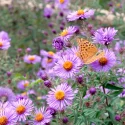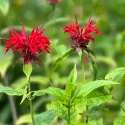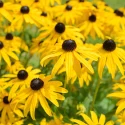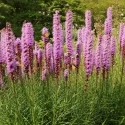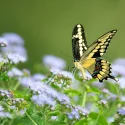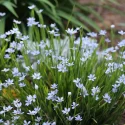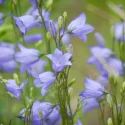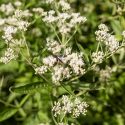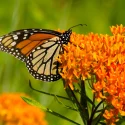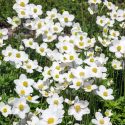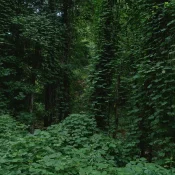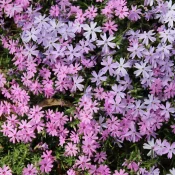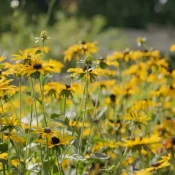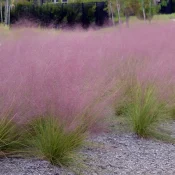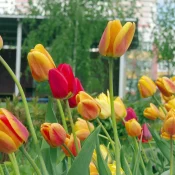Roses are one of the most iconic flowers in the world—found in gardens, grocery store bouquets, and Grammy-winning love songs. But are they native? The answer is yes… and no.
While some roses are native to North America, many of the ones we see in stores and gardens are hybrids or species from other continents. If you’re looking to grow roses that support local wildlife and thrive with minimal care, native species are the way to go. Let’s dig in.
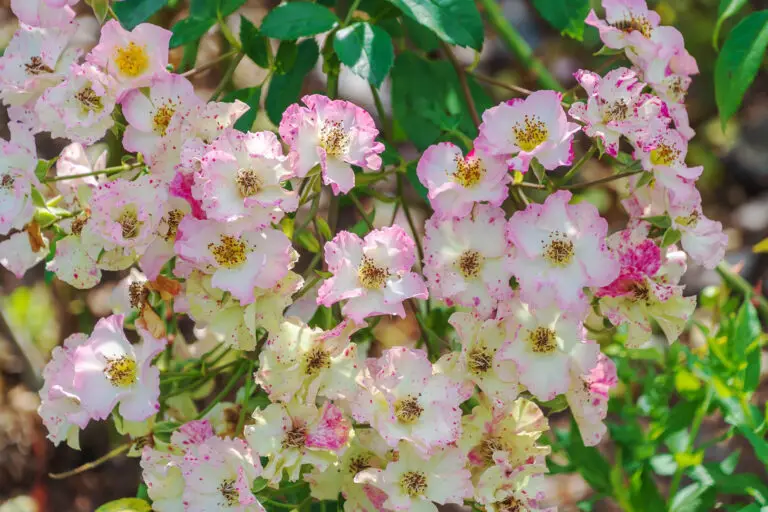
Roses have been American garden staples for generations. But when you start exploring native plants, you might find yourself wondering—are the roses in my garden actually from here? With over a hundred species of roses found worldwide, let’s take a closer look at which ones are truly native to North America.
Which roses are native to North America?
There are about 35 species of wild roses (genus Rosa) native to North America. These roses evolved alongside local pollinators and wildlife, making them excellent choices for your yard. They’re tough, low-maintenance, and many provide food and shelter for birds, bees, and butterflies.
Some of the most common native roses include:
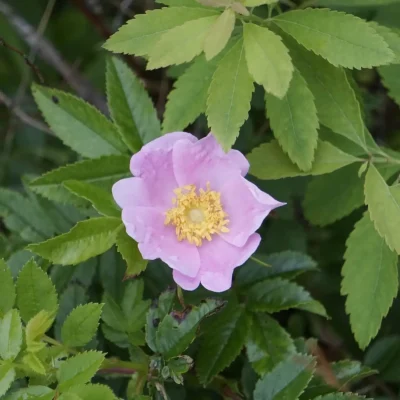
Pasture Rose
Rosa carolina
A low-growing rose with pink blooms, found in meadows and open woods. Perfect for making hedges or living fences. In the fall, the blooms turn into vitamin-rich rose hips. Native to entire eastern seaboard.
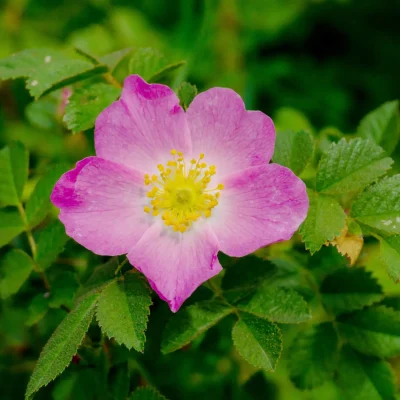
Virginia Rose
Rosa virginiana
Do you live near the beach? This is the rose for you. Virginia Roses thrive in a wide range of sun, from full sun to part sun, and grow quickly to around 4-5 feet tall and wide. They are salt-tolerant, making them great for beach landscapes alongside roads and driveways in wintery locations. Native from North Carolina north to Maine.
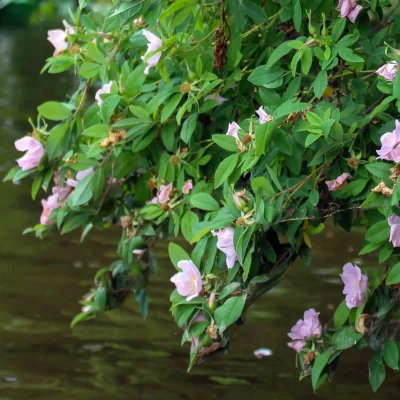
Swamp Rose
Rosa palustris
The name gives it away—this is the native rose for wetter areas. Plant alongside lakes, streams, ponds and yes—swamps.
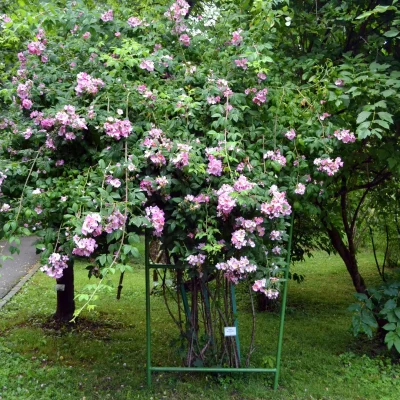
Climbing Prairie Rose
Rosa setigera
Do you have a trellis or fence or some space for a rose to spread? This is the native rose for you. Climbing Prairie Roses send out long canes reaching 10′ or more. In the fall, their leaves turn shades of red, purple, and orange.
Sadly, the Canadian government has designated Climbing Prairie Rose as ‘threatened’ or under ‘special concern’ since the 1980s.
And there are more! Here are the ones we just met, alongside some other native options you may find at native plant nurseries:
| Common Name | Scientific Name | Native to… |
|---|---|---|
Native Roses for Midwest, Northeast, and Southern North America |
||
| Carolina Rose | Rosa carolina | Eastern United States and Canada |
| Climbing Prairie Rose | Rosa setigera | Eastern U.S., from Quebec to Florida and westward to Missouri and Texas; great for a trellis or fence |
| Prairie Rose | Rosa blanda | Central North America, from Ontario down into Texas and west to the Rockies |
| Smooth Rose | Rosa blanda | Northeastern North America; an almost thornless rose! |
| Swamp Rose | Rosa palustris | Wetlands across the Eastern U.S., from Quebec to Florida and westward to Missouri |
| Virginia Rose | Rosa virginiana | Eastern North America, from Quebec to Georgia and westward to Missouri |
Native Roses for Northwest and Western North America |
||
| Nootka Rose | Rosa nutkana | Pacific Coast from Alaska down into California |
| Wood’s Wild Rose | Rosa woodsii | Western North America, from the Rockies through the Cascades |
These native roses are far from the high-maintenance, disease-prone varieties you see in formal gardens. They’re resilient, adaptable, and perfect for low-maintenance native gardening.
And now you’re probably asking…
What about store-bought roses?
The roses you see at grocery stores, florists, and big box nurseries aren’t native—they’re usually hybrids or non-native species. Most of those roses are the following:
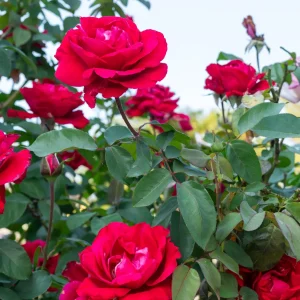
Hybrid Tea Roses
These roses, bred for long-lasting blooms, originate from European, Middle Eastern, and Asian species. Most Tea Roses feature single blooms on long stems. They got their name because their scent was said to resemble that of Chinese black tea.
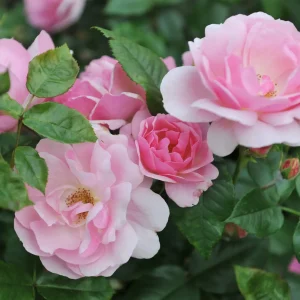
Floribunda Roses
The name “floribunda” means “many flowers,” a fitting name for these cluster-blooming roses. Popularized by Jackson & Perkins in the 1920s, floribundas—like the widely sold Knock Out® roses—originate from European and Asian species.
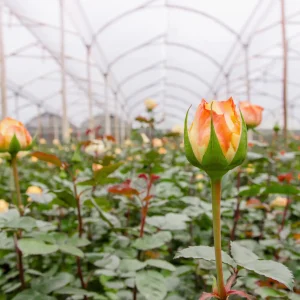
South American Rose Farms
Most cut roses in grocery stores are grown in Ecuador and Colombia, where high altitudes and controlled greenhouse environments produce long-stemmed roses for the global floral market.
While these roses are undeniably beautiful, they often require pesticides, fertilizers, and fussy irrigation to stay healthy. They also don’t support local pollinators the way native roses do.
Not all roses are beautiful or benign. There are some non-native roses are also particularly harmful to our landscapes.
Invasive roses to watch out for (and remove!)
While many non-native roses are just ornamental, some species spread aggressively and crowd out native plants. When a plant aggressively spreads and stamps out native species, it is called invasive.
A few non-native roses are invasive in North America. How did they get here? According to the Illinois Department of Natural Resources, the invasive Multiflora rose “…was introduced to the U.S. from Japan in 1866 as rootstock for grafted ornamental rose cultivars. The spread of multi flora rose increased in the 1930s when it was introduced by the U.S. Soil Conservation Service for use in erosion control and as living fences, or natural hedges for livestock.” Time to walk this mistake back.
If you have any of the following invasive roses in your yard, remove them to help control their spread and replace them with native plants.
Non-native roses that take over—remove these ASAP!
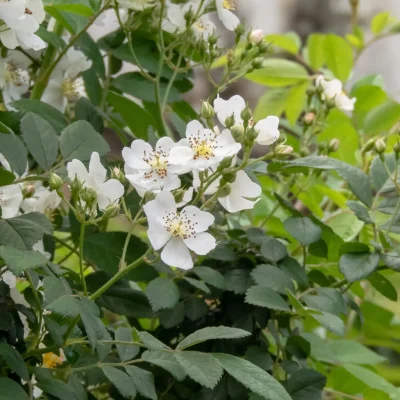
Multiflora Rose
Rosa multiflora
This is the WORST offender
Origin: East Asia (Introduced in the 1800s)
Why It’s a Problem: Originally promoted for erosion control and as a “living fence,” Multiflora Rose has since taken over fields, forests, and roadsides. It spreads rapidly, forms dense thickets, and outcompetes native plants. The Illinois Department of Natural Resouces has a guide to removal.
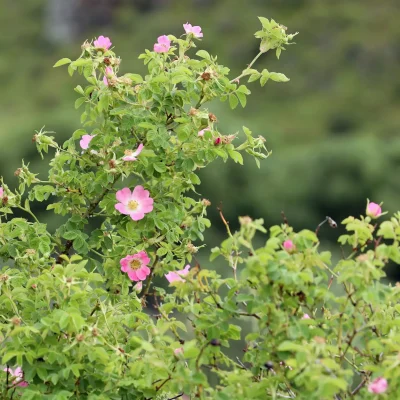
Sweetbriar Rose
Rosa rubiginosa
Origin: Europe and Western Asia
Why It’s a Problem: This fragrant, thorny rose forms dense thickets that quickly take over. The USDA says it simply, “It should not be planted in a home landscape, for wildlife habitat, or for any other use.”
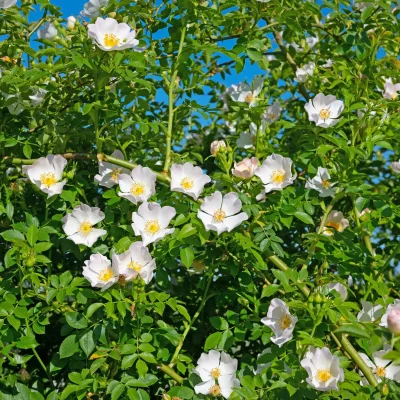
Dog Rose
Rosa canina
Origin: Europe, North Africa, and Western Asia
Why It’s a Problem: Once planted for erosion control, Dog Rose spreads aggressively growing up to 9 feet tall, competing with native plants. The USDA states, “The forage value of pastures decreases rapidly following the invasion and spread of the plant. In addition, dog rose impedes the movement of livestock, wildlife and vehicles.”
Sadly, even though invasive in many states, this plant is sometimes sold at nurseries.
You might be thinking—wow. The invasive Sweetbriar and Dog Rose look so similar to native roses. And now you’re asking:
How can I tell invasive roses apart from native?
To tell them apart, look at the thorns: Dog and Sweetbriar roses have hooked, curved thorns. Native rose thorns are straight. Eco-Friendly Homestead has a great overview for PNW identification.
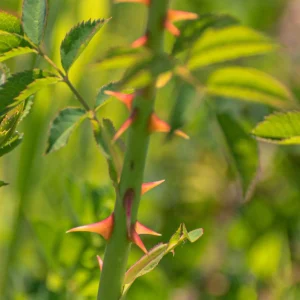
Native Rose Thorns
Most native roses have straight thorns, without a hook at the end.
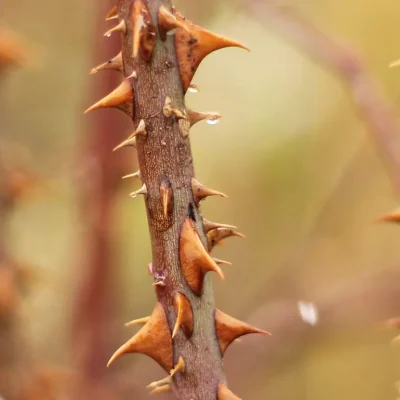
Invasive + Non-Native Roses
Many invasive roses—like Dog and Sweetbriar—have thorns that hook or curve at the ends.
If you have an invasive rose, it’s time to get it out of the garden.
How can I remove invasive roses?
These plants are invasive because they spread so quickly. It can take repeated years of work to remove them fully. But you got this! Here’s what to do:
- Remove seedlings early. Pull young plants by hand (wear gloves—they’re thorny!)
- Cut plants to the ground and apply targeted herbicide to prevent regrowth.
- If you want to skip herbicide, cut down and dig out the roots; repeated cutting or digging is needed to weaken the root system.
Again—be vigilant; it will take repeated removal techniques over the years. Have some Advil, a foam roller, and your beverage of choice ready to recuperate after removal.
Feeling overwhelmed?
Native, non-native, invasive—we just introduced A LOT of roses. Visiting any conventional plant nursery will introduce dozens more species to consider.
As you consider which ones to plant, you may be asking—
Why plant native roses?
If you love roses but want a low-maintenance, eco-friendly option, native roses are the perfect choice. Here’s why:
- Pollinator-Friendly – Native roses attract bees, butterflies, and other pollinators, unlike many modern hybrids that have lost their nectar and scent.
- Low Maintenance – They’re adapted to local conditions, needing little to no fertilizers, pesticides, or extra watering.
- Resilient & Hardy – Native roses are naturally resistant to disease and pests, unlike high-maintenance hybrid roses.
- Supports Birds & Wildlife – After blooming, native roses produce rose hips—a crucial winter food source for birds like cardinals and finches.
Non-native roses cannot deliver this powerful, ecologically friendly list of benefits.
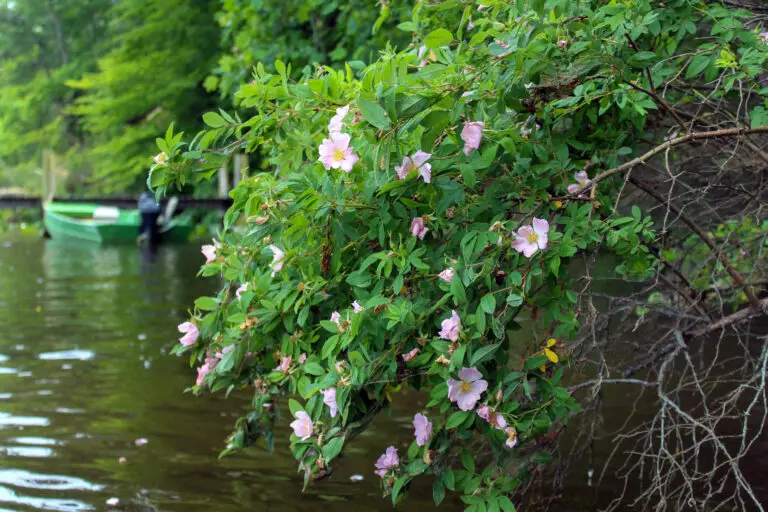
Where can I find native roses?
Skip the big-box stores. The best way to shop and find native is to visit a native nursery alongside these other ideas:
Where can I find seeds and plants?
Finding native plants can be challenging (we partly blame Marie Antoinette.) To make it easier, we’ve assembled four sourcing ideas.
300+ native nurseries make finding one a breeze
Explore 100+ native-friendly eCommerce sites
Every state and province has a native plant society; find yours
Online Communities
Local Facebook groups are a great plant source
To sum it all up—roses can be both native and non-native, but if you want a low-maintenance, pollinator-friendly option, stick with native species. They’re tough, beautiful, and designed to thrive in North America—without all the extra fuss. With dozens of native species available for every part of North America, it’s easy to find a native option for your garden.
If you’re looking to buy native roses, check out our guide to native plant nurseries and start planting a garden that benefits both you and local wildlife. Or visit our popular guides to flowers favorites, like the Beginner’s Guide to Native Lilies or the Beginner’s Guide to Native Coneflowers. Happy planting!
Sources
- Griep, Stan V. “What Are Hybrid Tea Roses and Grandiflora Roses?” gardeningknowhow. Gardening Know How, June 2, 2011.
- Griep, Stan V. “Learn about Floribunda and Polyantha Roses.” gardeningknowhow. Gardening Know How, May 29, 2011.
- Smith, Ben. “Tea Roses.” Sunnyside Nursery, June 11, 2018.
- Calscape. “Baldhip Rose.” Calscape.org, 2025.
- Calscape. “Nootka Rose.” Calscape.org, 2025.
- Ecofriendlyhomestead.com. “Pacific Northwest Wild Rose Visual Identification Guide.” November 12, 2024.
- Contributors. “Rose Class.” Wikipedia.org. Wikimedia Foundation, Inc., October 10, 2010.
- Minnesotawildflowers.info. “Rosa Acicularis (Prickly Wild Rose),” Minnesota Wildflower Society, 2016.
- Ncsu.edu. “Rosa Palustris (Swamp Rose).” North Carolina Extension Gardener Plant Toolbox, 2025.
- Ncsu.edu. “Rosa Setigera (Climbing Prairie Rose, Climbing Rose, Climbing Wild Rose, Prairie Rose)” North Carolina Extension Gardener Plant Toolbox, 2025.
- Ncsu.edu. “Rosa Setigera (Climbing Prairie Rose, Climbing Rose, Climbing Wild Rose, Prairie Rose).” North Carolina Extension Gardener Plant Toolbox, 2025.
- Illinois Department of Natural Resources. “Multiflora Rose (Rosa multiflora).” n.d.
- Jackson & Perkins. “The Different Types of Roses: An Ultimate Guide,” 2025.
- Wildflower.org. “Smooth Rose – Rosa Blanda.” Lady Bird Johnson Wildflower Center – the University of Texas at Austin, 2019.
- USDA. “Plant Guide: SWEETBRIAR ROSE Rosa Rubiginosa L.” n.d.
- USDA. “Plant Guide NOOTKA ROSE,” n.d.
- USDA. “Plant Guide WOODS’ ROSE Rosa Woodsii Lindl.” n.d.
- USDA. “Prairie Rose,” n.d.
- COSEWIC. “COSEWIC Assessment and Update Status Report on the Climbing Prairie Rose Rosa setigera in Canada.” Committee on the Status of Endangered Wildlife in Canada. Ottawa, 2003.
What if your feed was actually good for your mental health?
Give your algorithm a breath of fresh air and follow us.

